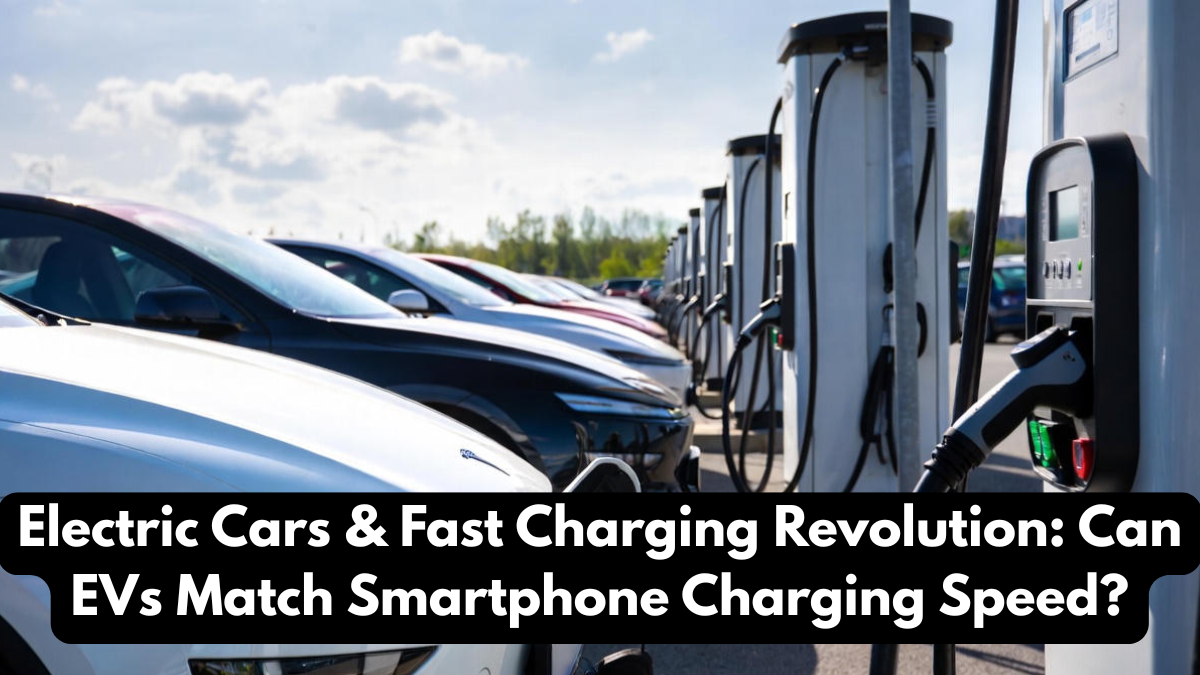In recent years, the automotive industry has been undergoing a massive transformation, driven by innovation, sustainability, and technology. One of the most exciting advancements in this space is EV fast charging, a development that’s changing how quickly drivers can recharge their electric vehicles. As we move closer to electric cars 2025, the industry’s goal is clear — to make EV charging as fast, effortless, and convenient as charging a smartphone.
Electric mobility is no longer a futuristic concept; it’s a rapidly growing reality. Governments, automakers, and consumers worldwide are all investing heavily in cleaner transportation solutions. But despite the rise in adoption, one major challenge has persisted — charging time. This is where EV fast charging steps in, promising to revolutionize how we power our vehicles and bringing us closer to a truly electrified future.

The Rise of EV Fast Charging Technology
Traditional electric vehicle charging used to take several hours, depending on the battery size and charger capacity. However, with EV fast charging, this limitation is rapidly fading away. Using high-power DC chargers, drivers can now replenish up to 80% of their vehicle’s battery in as little as 20–30 minutes.
EV fast charging works by delivering higher voltage and current directly to the car’s battery system, bypassing the slower onboard charger. As we move into the era of electric cars 2025, manufacturers are integrating ultra-fast charging systems capable of reaching 350 kW or more, enabling EVs to gain hundreds of kilometers of range in just minutes.
Key advantages of EV fast charging include:
- Significant reduction in charging time
- Improved convenience for long-distance travel
- Enhanced adoption of EVs globally
- Compatibility with next-generation electric cars 2025
This innovation is helping remove one of the biggest barriers to EV ownership — range anxiety.
Comparing Traditional Charging vs EV Fast Charging
Here’s a quick comparison showing how EV fast charging outperforms traditional methods, especially as we approach the electric cars 2025 era:
| Charging Type | Power Output | Charging Time (0–80%) | Ideal Use Case |
|---|---|---|---|
| Level 1 (AC) | 1–2 kW | 8–12 hours | Home overnight charging |
| Level 2 (AC) | 7–22 kW | 3–6 hours | Public or home fast charging |
| DC Fast Charging | 50–350 kW | 20–40 minutes | Long-distance travel and quick top-ups |
| Ultra-Fast (Next-Gen) | 500+ kW | 10–15 minutes | Electric cars 2025 and beyond |
The table shows how charging speeds are improving dramatically. As technology evolves, EV fast charging stations are expected to become as accessible and efficient as fuel stations, reshaping how we think about refueling entirely.
How Electric Cars 2025 Are Built for Faster Charging
Future electric cars 2025 are being designed around high-performance battery systems capable of handling greater charging speeds safely. Manufacturers are experimenting with solid-state batteries, advanced cooling systems, and AI-driven charging management to optimize energy flow without overheating or reducing battery lifespan.
These innovations make it possible for EV fast charging to reach new milestones. Moreover, with smart grid integration, EVs will soon communicate with charging stations and power networks in real time, balancing load distribution for maximum efficiency.
Notable advancements expected in electric cars 2025 include:
- Ultra-efficient battery chemistry reducing charging time
- Bi-directional charging (vehicles sending power back to the grid)
- Integration of renewable energy sources in charging infrastructure
- Standardization of high-voltage connectors for universal access
This new ecosystem ensures that EV fast charging becomes as routine as plugging in your smartphone every night — only much faster.
The Role of Infrastructure and Global Adoption
While technology is advancing rapidly, the global EV fast charging infrastructure still needs to scale to support millions of upcoming electric cars 2025. Governments and private players are working together to deploy fast-charging networks across highways, urban centers, and commercial zones.
Countries like China, Germany, and the U.S. are leading the charge, investing billions in public charging systems that will make electric mobility universally accessible. The goal is to ensure that no EV driver is ever too far from a reliable, high-speed charger.
Conclusion
The race toward faster charging is redefining the electric vehicle landscape. EV fast charging is no longer just an add-on feature — it’s becoming a necessity for the new generation of electric cars 2025. As battery efficiency and charging infrastructure continue to evolve, the dream of charging an EV as quickly as a smartphone is turning into a reality.
The combination of innovation, government support, and consumer demand will ensure that EV fast charging remains the cornerstone of tomorrow’s mobility — efficient, sustainable, and lightning-fast.
FAQs
What is EV fast charging?
EV fast charging is a high-speed charging method that allows electric vehicles to recharge up to 80% of their battery within 20–40 minutes using DC power.
How do electric cars 2025 differ from current EVs?
Electric cars 2025 will feature advanced batteries, higher voltage systems, and support for ultra-fast chargers, significantly reducing charging time.
Can fast charging damage EV batteries?
Modern EV fast charging systems include temperature control and smart management features to prevent battery degradation.
Will EV fast charging become standard by 2025?
Yes, most electric cars 2025 models are being built with compatible fast-charging capabilities as part of the global transition to clean energy.
How many fast-charging stations are available globally?
The number of EV fast charging stations is rapidly growing, with thousands being added each year to support the increasing number of electric cars 2025 on the road.
Click here to learn more